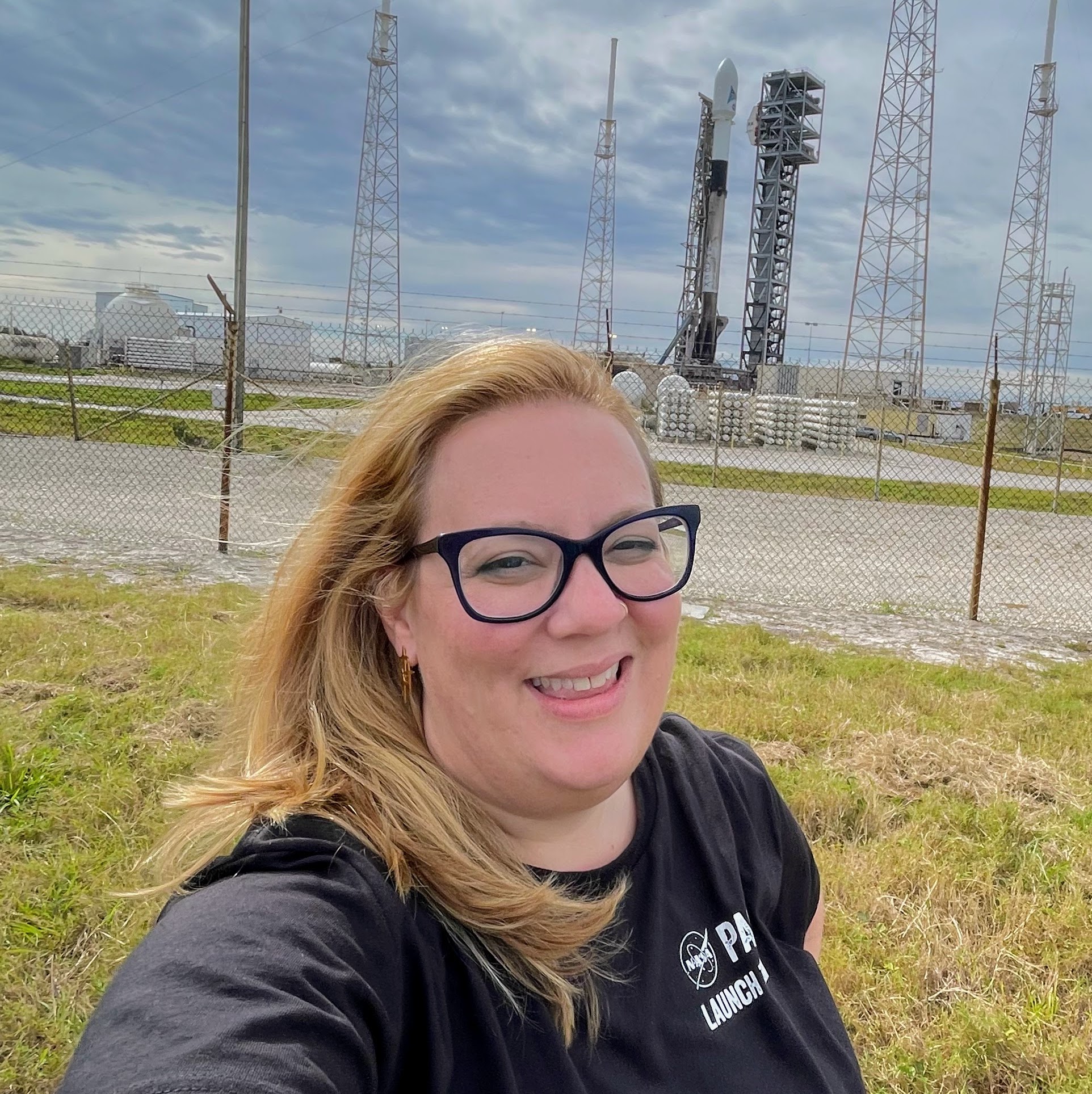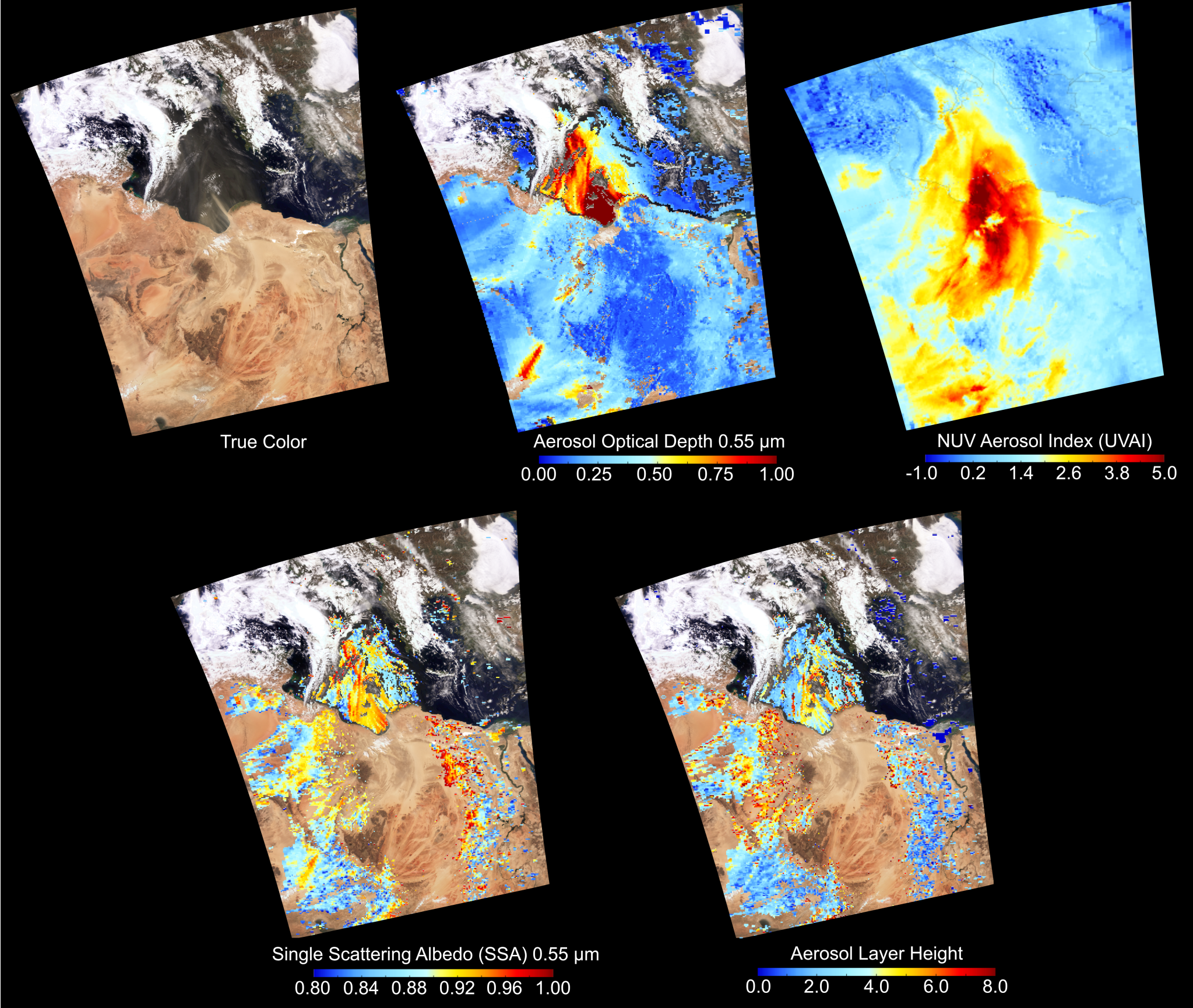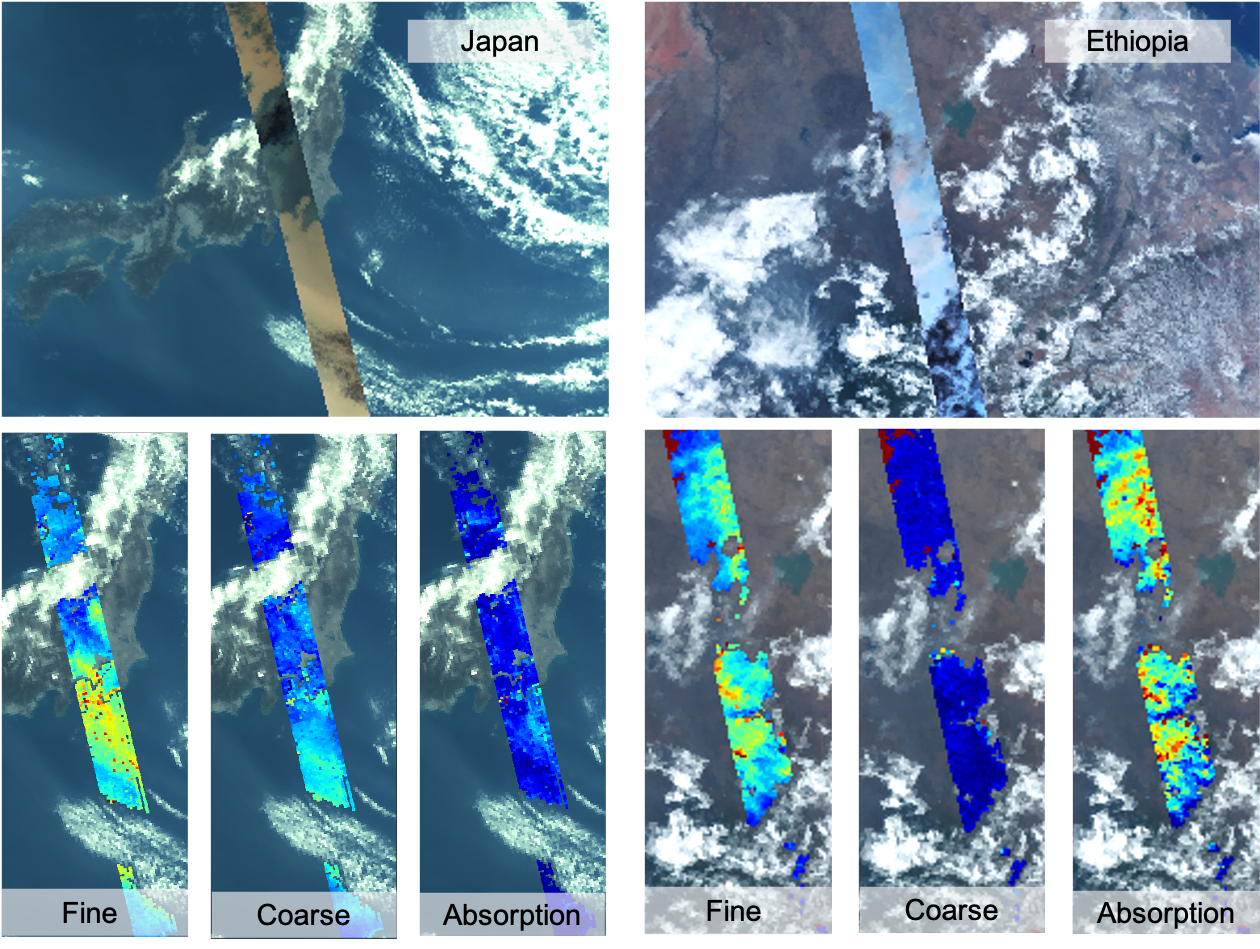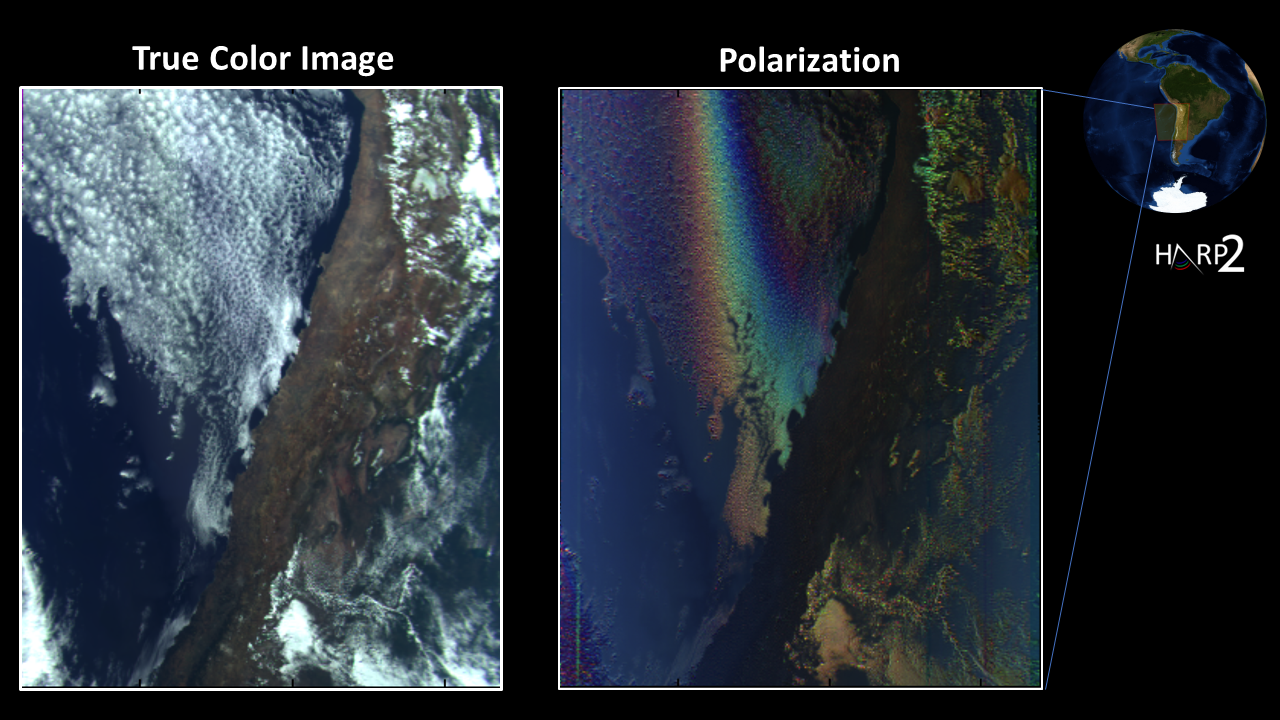4.04.2024
To achieve the impossible, Veronica T. Pinnick, who put NASA’s PACE mission through its prelaunch paces, says you need to get comfortable with being uncomfortable.
Name: Dr. Veronica T. Pinnick
Title: Plankton Aerosol, Cloud and ocean Ecosystem (PACE) Integration and Test (I&T) manager
Formal Job Classification: Chemist
Organization: Integration and Test Branch, Electrical Engineering Division (Code 568)

What do you do and what is most interesting about your role here at Goddard?
As the PACE I&T manager, I managed the build-up of the entire observatory. Integration means we put the spacecraft together. Testing means we make sure it works within itself and that it will also work in space.
Why did you become a chemist? What is your educational background?
In third grade, we did a science experiment that involved pulling out the colors of a black maker, which turned out to be a mixture of many colors. It was the first time my little science brain exploded! I learned that maybe not everything was as it first appeared, it was so cool. Years later, I now do that same experiment (chromatography) on Mars, looking at dirt and pulling it apart to see what it is made of.
I have a B.A. in chemistry from Minot State University in North Dakota. I have a Ph.D. in analytical chemistry from Texas A&M University. I did a post-doctoral fellowship at Johns Hopkins School of Medicine in Maryland.
How did you come to Goddard?
My post-doctoral fellowship involved a Goddard project, designing an instrument to look for life on Mars. I thought that was an interesting application of my specialty! After my fellowship, I joined Goddard in 2010 working on that same project for 10 more years.
Towards the end of that project, I became the I&T manager responsible for building, testing, and delivery of that instrument to an ESA (European Space Agency) Mars rover. During those years, I realized that I wanted to change my career path more towards engineering.
Why did you merge science and engineering in your career?
Branching out to try new things can be scary. I think what I enjoy most about working at Goddard is that there are endless opportunities for people who are comfortable being uncomfortable. I really like both science and engineering. I think skills from my scientific background really help in building and testing instruments for other scientists.
When I started in college, I did not really understand the difference between science and engineering. When I arrived at Goddard, I learned the important difference between these two different roles. The scientist asks, “What do I want to measure?” The engineer asks, “How can I build an instrument to measure that?” Blending the two disciplines, you end up with an instrument that measures something in space!
We work at our best when we are cross-disciplinary, when scientists think like engineers and engineers think like scientists, when we can understand where each other is coming from. My passion is to try to return Goddard to my original mindset, that there should be full understanding of the goals of science and engineering by both disciplines.

As a mentor, how do you encourage your people to be cross-disciplinary?
I encourage my mentees to think about their skill sets with an open mind and an open imagination. Sometimes people can get pigeon-holed in their skills and think they can only do one specific job. With the right mentorship and the right vision of what Goddard can do, and what gaps exist, we can fill the gaps with different skill sets.
So many times, junior scientists and engineers tell themselves they cannot do something because they lack the background or education. But in practice, what you really need are creative thinkers, creative problem solvers – your background does not matter. You must believe in your own potential. I try to show my mentees that I believe in them and their potential to branch out from their comfort zone. I tell them to push themselves to evolve. Again, you progress by being uncomfortable.
Goddard has the top minds in science and engineering. Everyone is always learning from their peers. Likewise, our mentees have so much to offer. The most junior people come at problems with a fresh perspective. Diverse perspectives always help bring new ideas to the table.
What is Goddard’s greatest challenge for new scientists and engineers?
When you are at a university, you do not always have a big budget, but you are unlimited in terms of the size or power of an instrument you want to build. When you send an instrument to space, the engineering challenges are to make it small, lightweight, and power efficient.
This is one of the hardest changes coming out of a university and joining Goddard. This is an adjustment that every person new to space has to think about and make.
What has made you proudest in your career?
I am proud of what I have built for space, but I am proudest of the people I have positively impacted along the way. I really think it is important to learn lessons from those who came before me and I am very grateful to them. I also want to help teach those coming up. We prepare lessons learned after each mission. I feel very strongly that it is important to pass these along to the next generation.
In addition to technical information, I focus a lot on people skills. To build a good team culture, you have to listen to and respect all the voices on your team. I hope to pass on the importance of teamwork and also having fun while doing our very important, very difficult work.
How does being comfortable being uncomfortable motivate you?
I have been drawn to a lot of flight missions and technology developments that are really, really challenging. That is what Goddard does best. It is unbelievable to do science on other planets! Each planet has its own unique challenges.
I started by working on ExoMars, the ESA Mars rover. I learned all about Mars and what makes doing science on Mars hard.
Then I worked on the proposal for Dragonfly, which is a flying drone that will explore Saturn’s moon Titan. I had to learn about why Titan is hard.
Now, I’ve finished building and launching a whole satellite for observing Earth, which included performing all the testing needed to make sure it will work on orbit.
Engineering instruments for different locations in the solar system requires a whole new set of engineering solutions. That is really fun, it allows me to be so creative. There are very few tried and true methods for some of these environments.
At Goddard, I am constantly challenged which makes me constantly uncomfortable but that is what I like. At first, it is intimidating. Then it is exciting!
Be comfortable being uncomfortable!
Why is working at Goddard like solving a puzzle?
At Goddard we work with some of the smartest people around. We are open to brainstorming together and coming up with solutions together.
Working on flight missions at Goddard, we work in teams which are inherently cross-disciplinary. When problems happen, it is not always easy to figure out what went wrong or how to fix the problem. Some of my most invigorating professional moments have been when things don’t go according to plan and I feel like a detective trying to figure out what exactly went wrong and how to fix it. That is where I have seen some of Goddard’s absolute best work.
Troubleshooting is like looking at 850 pieces of a 1,000 piece puzzle that you have to put together. You will never get all the pieces, but will have a pretty good idea of the big picture. It initially makes me frustrated, but I love it. It is so satisfying when your team solves the puzzle.
Why are education and outreach so important to you?
Being a good scientist means that a portion of your job is to communicate to the public what you are studying, why it is important, and what you found out. As a civil servant, the public is paying me to do this job, so I feel extremely responsible for bringing NASA’s mission to the public.
I have done education and public outreach with people of all ages. I really enjoy doing Mars rover activities with preschoolers. Three- and 4-year-olds helped me design the next Mars rover. Honestly, their ideas had great potential. I told them Mars was cold, so some of the kids put a blanket on the Rover model, which is almost exactly what we do. They were so excited to find out their solution really works in space!
People respond to knowing they can be a part of what we do. The public is so excited about what we do and want to know more. I feel inspired by their curiosity. Their excitement is infectious. They reinvigorate the joy in what we do and why we are doing what we do. I truly consider being an ambassador for NASA to the public a privilege, not a responsibility.
What do you do for fun?
I really like escape rooms; they involve all sorts of puzzles. I love the challenge of trying to figure something out under pressure. I play acoustic guitar and ukelele. We have a family band, but we only perform at home. I also like to travel and learn new languages. I am a total foodie and very much enjoy new creations made by my husband.
Who would you like to thank for encouraging you?
I absolutely thank my family, especially my husband and my son. Many of the missions we do at Goddard require a lot of personal sacrifice at times. Our missions often require long hours and extreme focus and concentration. We do it because we truly believe in and are inspired by Goddard’s mission. We are driven to build things and send them to space. That requires dedication not just from the people who work at Goddard, but also from their families. Their unending support means the world to me.
What is your “six-word memoir”? A six-word memoir describes something in just six words.
Always learning, giving back, being challenged.
By Elizabeth M. Jarrell
NASA’s Goddard Space Flight Center, Greenbelt, Md.

Conversations With Goddard is a collection of Q&A profiles highlighting the breadth and depth of NASA’s Goddard Space Flight Center’s talented and diverse workforce. The Conversations have been published twice a month on average since May 2011. Read past editions on Goddard’s “Our People” webpage.
Quelle: NASA
----
Update: 13.04.2024
.
NASA’s PACE Data on Ocean, Atmosphere, Climate Now Available

NASA is now publicly distributing science-quality data from its newest Earth-observing satellite, providing first-of-their-kind measurements of ocean health, air quality, and the effects of a changing climate.
The Plankton, Aerosol, Cloud, ocean Ecosystem (PACE) satellite was launched on Feb. 8, and has been put through several weeks of in-orbit testing of the spacecraft and instruments to ensure proper functioning and data quality. The mission is gathering data that the public now can access at https://pace.oceansciences.org/access_pace_data.htm.
PACE data will allow researchers to study microscopic life in the ocean and particles in the air, advancing the understanding of issues including fisheries health, harmful algal blooms, air pollution, and wildfire smoke. With PACE, scientists also can investigate how the ocean and atmosphere interact with each other and are affected by a changing climate.
“These stunning images are furthering NASA’s commitment to protect our home planet,” said NASA Administrator Bill Nelson. “PACE’s observations will give us a better understanding of how our oceans and waterways, and the tiny organisms that call them home, impact Earth. From coastal communities to fisheries, NASA is gathering critical climate data for all people.”
“First light from the PACE mission is a major milestone in our ongoing efforts to better understand our changing planet. Earth is a water planet, and yet we know more about the surface of the moon than we do our own oceans. PACE is one of several key missions – including SWOT and our upcoming NISAR mission – that are opening a new age of Earth science,” said Karen St. Germain, NASA Earth Science Division director.

The satellite’s Ocean Color Instrument, which was built and managed by NASA’s Goddard Space Flight Center in Greenbelt, Maryland, observes the ocean, land, and atmosphere across a spectrum of ultraviolet, visible, and near infrared light. While previous ocean color satellites could only detect a handful of wavelengths, PACE is detecting more than 200 wavelengths. With this extensive spectral range, scientists can identify specific communities of phytoplankton. Different species play different roles in the ecosystem and carbon cycle — most are benign, but some are harmful to human health — so distinguishing phytoplankton communities is a key mission of the satellite.
PACE’s two multi-angle polarimeters, HARP2 and SPEXone, measure polarized light that has reflected off clouds and tiny particles in the atmosphere. These particles, known as aerosols, can range from dust to smoke to sea spray and more. The two polarimeters are complementary in their capabilities. SPEXone, built at the Netherlands Institute for Space Research (SRON) and Airbus Netherlands B.V., will view Earth in hyperspectral resolution – detecting all the colors of the rainbow – at five different viewing angles. HARP2, built at the University of Maryland, Baltimore County (UMBC), will observe four wavelengths of light, with 60 different viewing angles.

With these data, scientists will be able to measure cloud properties — which are important for understanding climate — and monitor, analyze, and identify atmospheric aerosols to better inform the public about air quality. Scientists will also be able to learn how aerosols interact with clouds and influence cloud formation, which is essential to creating accurate climate models.

“We’ve been dreaming of PACE-like imagery for over two decades. It’s surreal to finally see the real thing,” said Jeremy Werdell, PACE project scientist at NASA Goddard. “The data from all three instruments are of such high quality that we can start distributing it publicly two months from launch, and I’m proud of our team for making that happen. These data will not only positively impact our everyday lives by informing on air quality and the health of aquatic ecosystems, but also change how we view our home planet over time.”
The PACE mission is managed by NASA Goddard, which also built and tested the spacecraft and the ocean color instrument. The Hyper-Angular Rainbow Polarimeter #2 (HARP2) was designed and built by the University of Maryland, Baltimore County, and the Spectro-polarimeter for Planetary Exploration (SPEXone) was developed and built by a Dutch consortium led by Netherlands Institute for Space Research, Airbus Defence, and Space Netherlands.
Quelle: NASA
